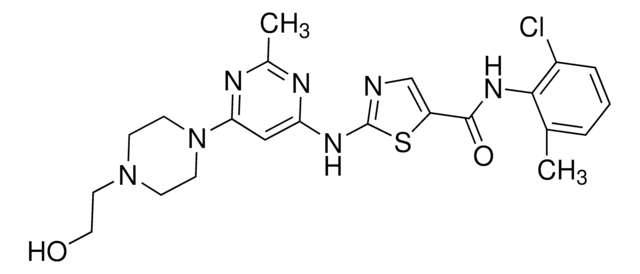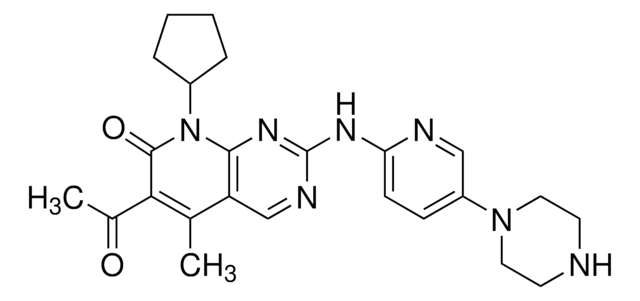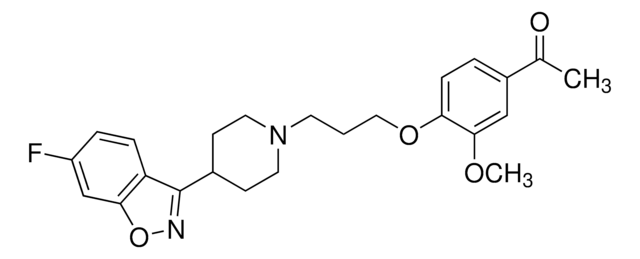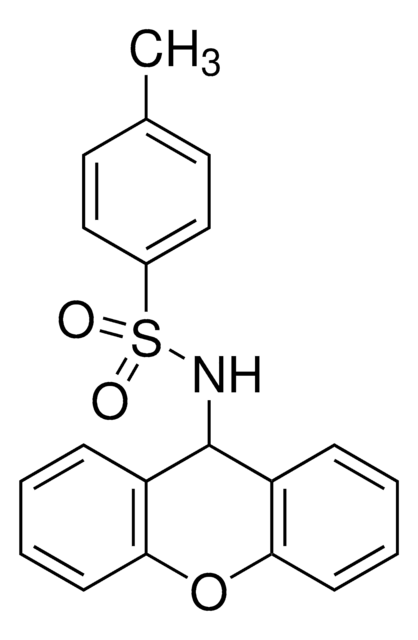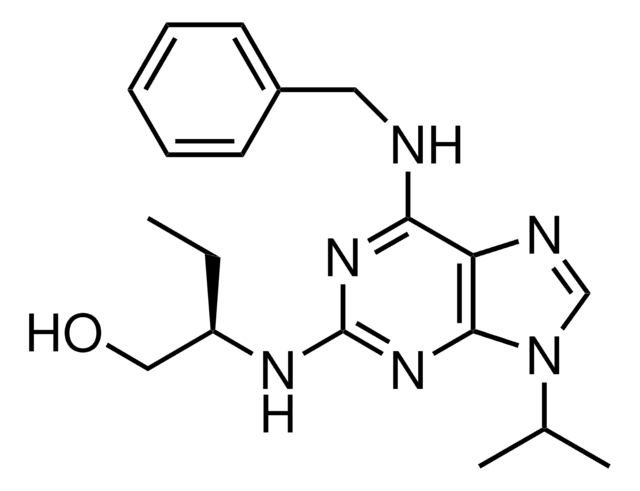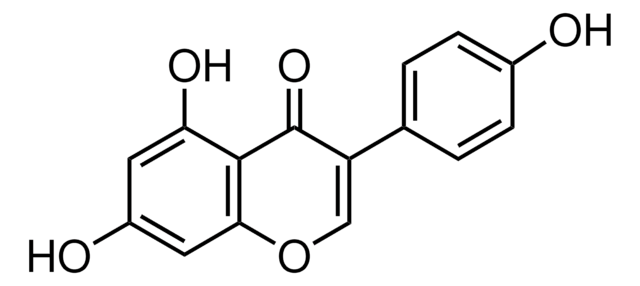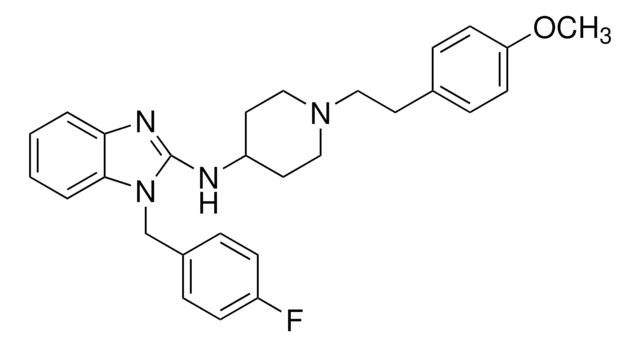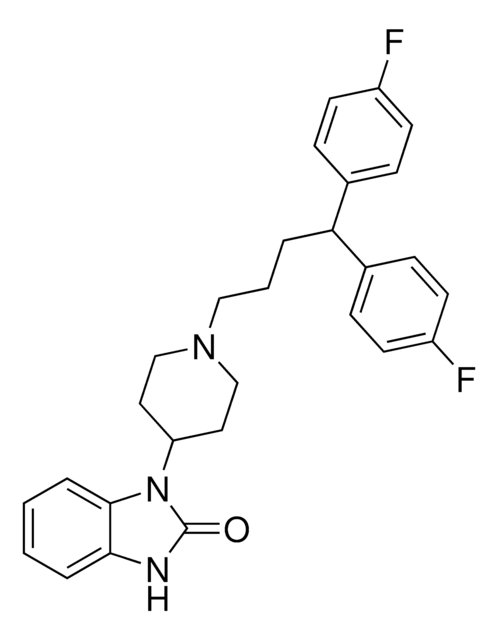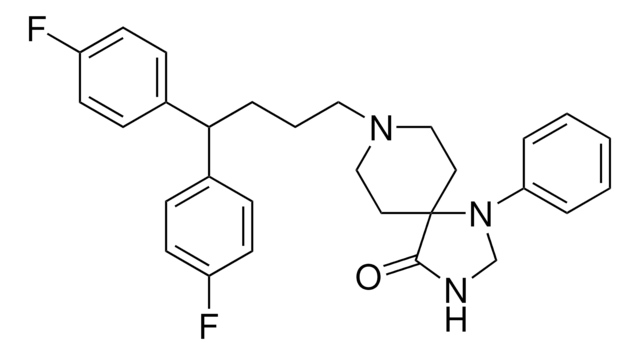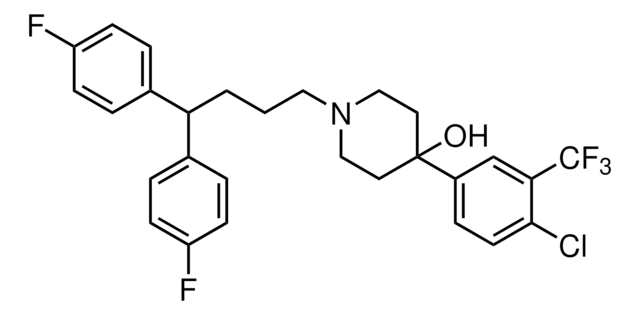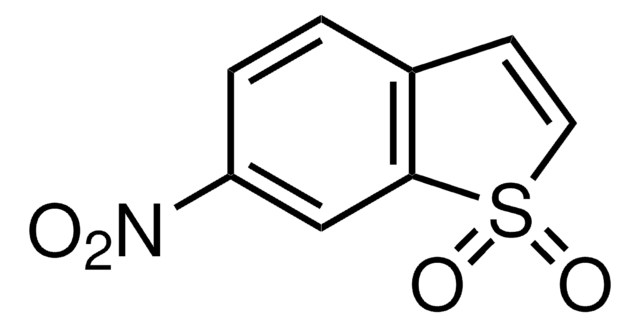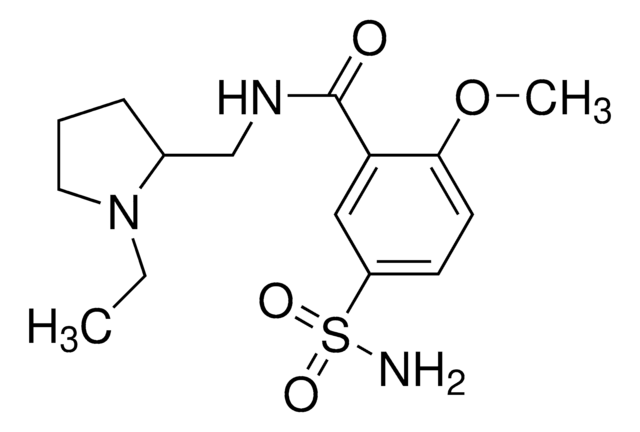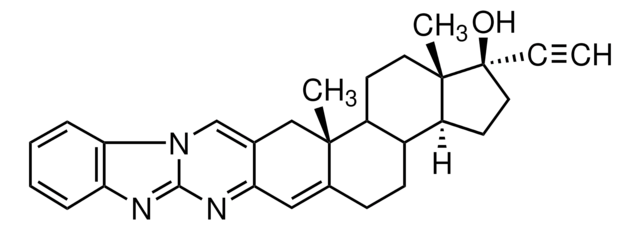P1793
Pimozide
≥98% (TLC), powder, D₂ dopamine receptor antagonist
Synonym(s):
1-[1-[4,4-bis(4-Fluorophenyl)butyl]-4-piperidinyl]-1,3-dihydro-2H-benzimidazol-2-one
About This Item
Recommended Products
product name
Pimozide,
form
powder
solubility
DMSO: 18 mg/mL(lit.)
chloroform: 5 mg/mL
H2O: insoluble(lit.)
originator
Teva
storage temp.
2-8°C
SMILES string
Fc1ccc(cc1)C(CCCN2CCC(CC2)N3C(=O)Nc4ccccc34)c5ccc(F)cc5
InChI
1S/C28H29F2N3O/c29-22-11-7-20(8-12-22)25(21-9-13-23(30)14-10-21)4-3-17-32-18-15-24(16-19-32)33-27-6-2-1-5-26(27)31-28(33)34/h1-2,5-14,24-25H,3-4,15-19H2,(H,31,34)
InChI key
YVUQSNJEYSNKRX-UHFFFAOYSA-N
Gene Information
human ... ABCB1(5243) , CACNA1G(8913) , CYP3A4(1576) , DRD1(1812) , DRD2(1813) , DRD3(1814) , DRD4(1815) , DRD5(1816) , HTR2A(3356) , HTR7(3363) , KCNH1(3756) , KCNH2(3757) , OPRD1(4985)
mouse ... Abcb1a(18671) , Abcb1b(18669)
rat ... Scnn1g(24768)
Looking for similar products? Visit Product Comparison Guide
Biochem/physiol Actions
Features and Benefits
Certificates of Analysis (COA)
Search for Certificates of Analysis (COA) by entering the products Lot/Batch Number. Lot and Batch Numbers can be found on a product’s label following the words ‘Lot’ or ‘Batch’.
Already Own This Product?
Find documentation for the products that you have recently purchased in the Document Library.
Customers Also Viewed
Related Content
Cyclic nucleotides, including cyclic AMP (cAMP), cyclic GMP (cGMP) and cyclic ADP-ribose, have been extensively studied as second messengers of intracellular events initiated by activation of GPCRs. cAMP modifies cell function in all eukaryotic cells, principally through the activation of cAMP-dependent protein kinase (PKA), but also through cAMP-gated ion channels and guanine nucleotide exchange factors directly activated by cAMP.
Our team of scientists has experience in all areas of research including Life Science, Material Science, Chemical Synthesis, Chromatography, Analytical and many others.
Contact Technical Service